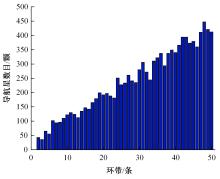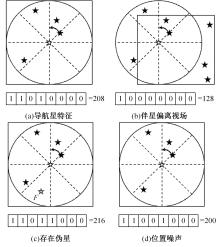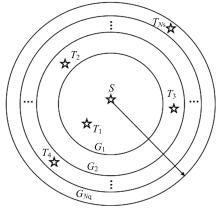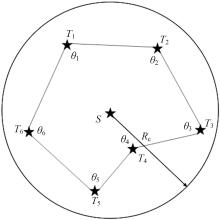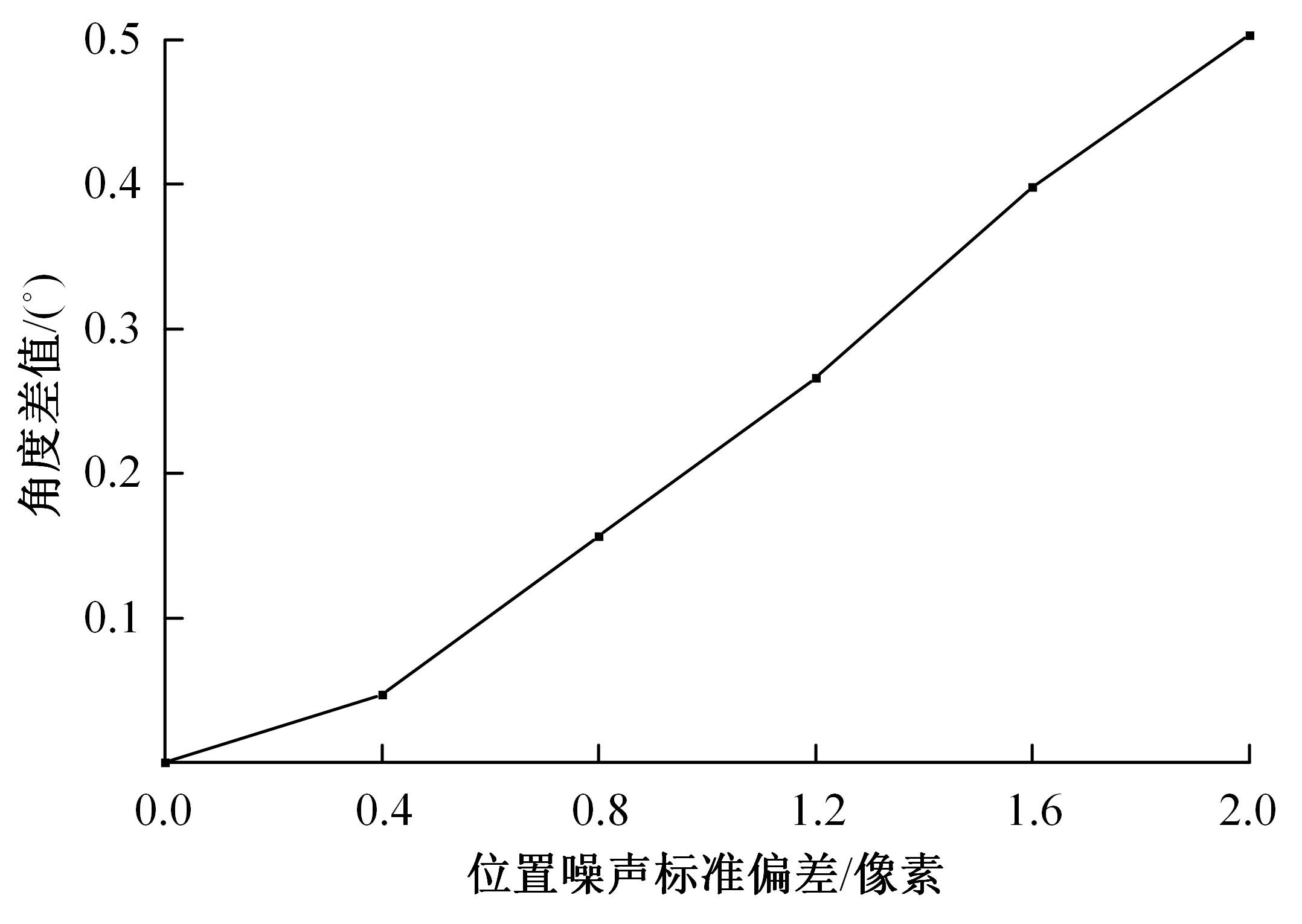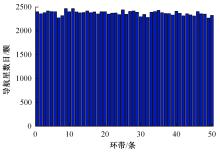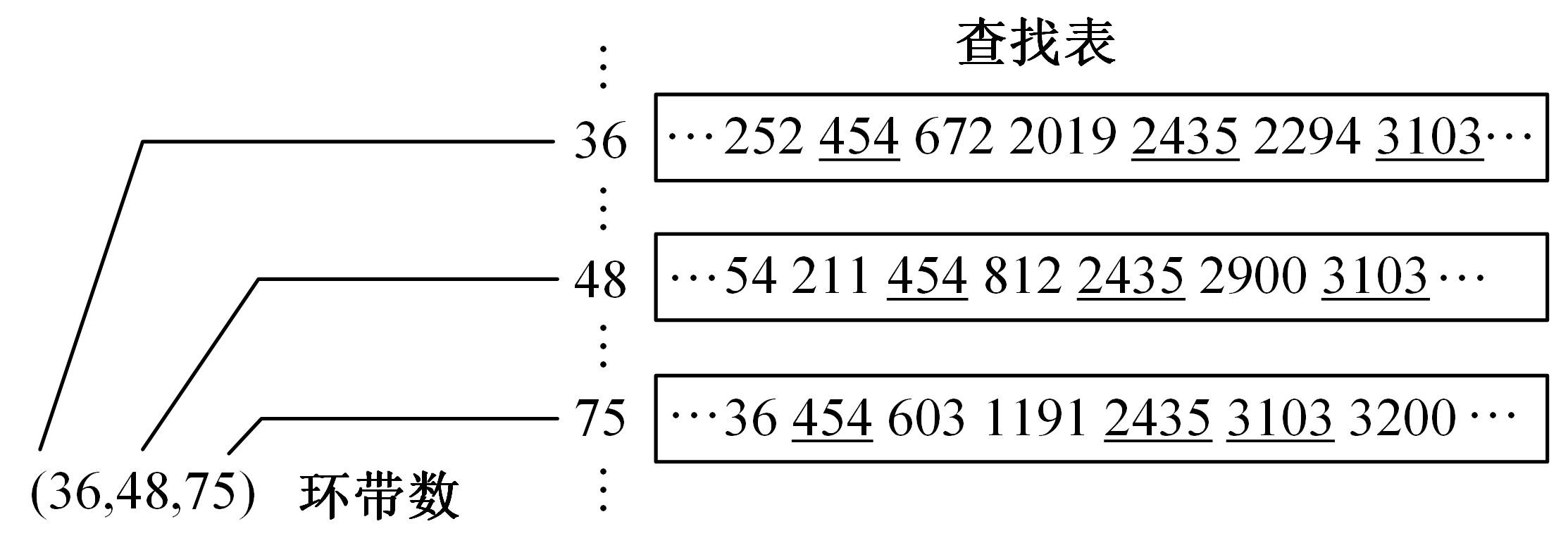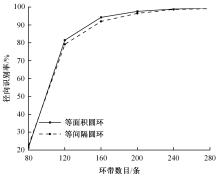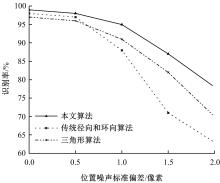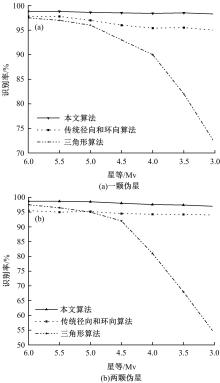Journal of Jilin University(Engineering and Technology Edition) ›› 2024, Vol. 54 ›› Issue (3): 821-827.doi: 10.13229/j.cnki.jdxbgxb.20220593
Star identification algorithm based on equal⁃area circle and companion star pinch angle
Liu ZHANG( ),Jin-hang HE,He LIU,Jia-bao ZHANG(
),Jin-hang HE,He LIU,Jia-bao ZHANG( ),Xue-ying LYU
),Xue-ying LYU
- College of Instrumentation & Electrical Engineering,Jilin University,Changchun 130012,China
CLC Number:
- V448.11
| 1 | Wang G, LI J, Wei X. Star identification based on hash map[J]. IEEE Sensors Journal, 2018, 18(4): 1591-1599. |
| 2 | Kim K, Bang H. Algorithm with patterned singular value approach for highly reliable autonomous star identification[J]. Sensors, 2020, 20(2): No. 374. |
| 3 | Wang H, Wang Z Y, Wang B D, et al. An artificial intelligence enhanced star identification algorithm[J]. Frontiers of Information Technology & Electronic Engineering, 2020, 21(11): 1661-1670. |
| 4 | Li J, Wei X, Wang G, et al. Improved grid algorithm based on star pair pattern and two-dimensional angular distances for full-sky star identification[J]. IEEE Access, 2020, 8: 1010-1020. |
| 5 | Liang X, Ma W, Zhou J, et al. Star identification algorithm based on image normalization and zernike moments[J]. IEEE Access, 2020, 8: 29228-29237. |
| 6 | Rijlaarsdam D, Yous H, Byrne J, et al. A survey of lost-in-space star identification algorithms since 2009[J]. Sensors, 2020, 20(9): No. 2579. |
| 7 | Xu L, Jiang J, Liu L. RPNet: a representation learning-based star identification algorithm[J]. IEEE Access, 2019, 7: 92193-92202. |
| 8 | Liebe C C. Star trackers for attitude determination[J]. IEEE Aerospace and Electronic Systems Magazine, 1995, 10(6): 10-16. |
| 9 | Liu M Y, Wei X, Wen D S, et al. Star identification based on multilayer voting algorithm for star sensors[J]. Sensors, 2021, 21(9): No. 3084. |
| 10 | Schulz V H, Marcelino G M, Seman L O, et al. Universal verification platform and star simulator for fast star tracker design[J]. Sensors, 2021, 21(3): No. 907. |
| 11 | Padgett C, Kreutz-delgado K. A grid algorithm for autonomous star identification[J]. IEEE Transactions on Aerospace & Electronic Systems, 1997, 33(1): 202-213. |
| 12 | Zhang G J, Wei X G, Jiang J. Full-sky autonomous star identification based on radial and cyclic features of star pattern[J]. Image and Vision Computing, 2008, 26(7): 891-897. |
| 13 | 高扬, 赵金宇, 陈涛, 等. 添加补偿码的快速径向伴星特征星图识别[J]. 光学精密工程, 2017, 25: 1627-1634. |
| Gao Yang, Zhao Jin-yu, Chen Tao, et al. Radial neighbor feature with compensate code star pattern recognition algorithm[J]. Optics and Precision Engineering, 2017, 25: 1627-1634. | |
| 14 | 赵军阳, 张志利, 刘殿剑. 一种利用改进径向特征的星图识别方法[J]. 系统仿真学报, 2019, 31(4): 601-607. |
| Zhao Jun-yang, Zhang Zhi-li, Liu Dian-jian, et al. Novel star map identification algorithm using improved radial features[J]. Journal of System Simulation, 2019, 31(4): 601-607. | |
| 15 | Wei X, Wen D, Song Z, et al. A star identification algorithm based on radial and dynamic cyclic features of star pattern[J]. Advances in Space Research, 2019, 63(7): 2245-2259. |
| 16 | Nabi A, Ahmed-Foitih Z, Cheriet M E A. Improved triangular-based star pattern recognition algorithm for low-cost star trackers[J]. Journal of King Saud University-Computer and Information Sciences, 2021, 33(3): 258-267. |
| 17 | Silani E, Lovera M. Star identification algorithms: Novel approach & comparison study[J]. IEEE Transactions on Aerospace and Electronic Systems, 2006, 42(4): 1275-1288. |
| No related articles found! |
|
||
